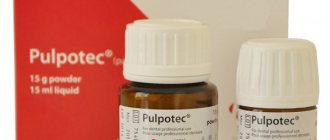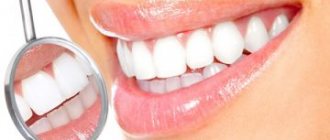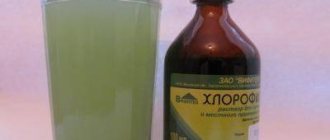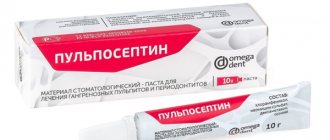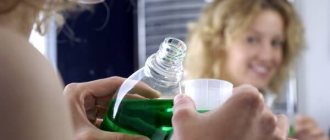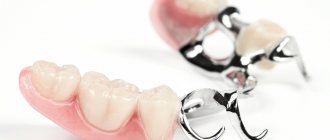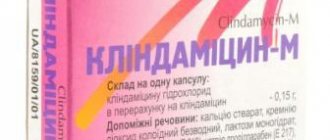Write a review
Reviews: 0
Active ingredients
- Doxycycline
Disease class
- Acute upper respiratory tract infection of multiple and unspecified localization
- Pneumonia without specifying the pathogen
- Acute lower respiratory tract respiratory infection, unspecified
- Vasomotor and allergic rhinitis
- Upper respiratory tract disease, unspecified
- Bronchitis, not specified as acute or chronic
- Chronic bronchitis, unspecified
- Chronic obstructive pulmonary disease, unspecified
- Infectious myositis
- Tendon sheath abscess
- Other infectious (teno)synovitis
- Abscess of the bursa
- Other infectious bursitis
- Tularemia
- Brucellosis, unspecified
- Mycoplasma infection, unspecified
- Syphilis, unspecified
- Gonococcal infection
- Other chlamydial sexually transmitted diseases
- Urinary tract infection without established localization
- Inflammatory diseases of the male genital organs, not elsewhere classified
- Inflammatory diseases of the female pelvic organs, unspecified
- Inflammatory diseases of the female pelvic organs caused by syphilis (A51.4, A52.7)
- Gonococcal inflammatory diseases of the female pelvic organs
- Inflammatory diseases of the female pelvic organs caused by chlamydia (A56.1)
Clinical and pharmacological group
- Not indicated. See instructions
Pharmacological action
- Antibacterial
- Broad spectrum antibacterial action
- Bacteriostatic
Pharmacological group
- Tetracyclines
Contraindications
- hypersensitivity to doxycycline, drug components, other tetracyclines;
- lactase deficiency;
- lactose intolerance;
- glucose-galactose malabsorption;
- porphyria;
- severe liver failure;
- leukopenia;
- children's age (up to 12 years - the possibility of the formation of insoluble complexes with calcium ions (Ca2+) with deposition in the bone skeleton, enamel and dentin of teeth);
- children over 12 years of age weighing up to 45 kg.
Doxycycline
Intravenous administration (IV) of Doxycycline is preferable in severe forms of purulent-septic diseases, when it is necessary to quickly create a high concentration of the drug in the blood and tissues, as well as in cases where oral administration of the drug is difficult. Step therapy is recommended, that is, switching to oral doxycycline dosage forms as soon as possible.
For adults
The usual daily dose of Doxycycline is 200 mg/day, administered once a day, or 100 mg every 12 hours.
The duration of therapy is determined by the form and severity of the infection; administered intravenously for 3-5 days, if necessary and/or well tolerated, parenteral administration is extended to 7 days; subsequently (according to indications!) switch to taking Doxycycline orally.
For pelvic inflammatory diseases in women in the acute stage of the disease
administered intravenously at 100 mg every 12 hours; Combination therapy with third generation cephalosporins is recommended. If the response to therapy is positive and the patient’s condition is stabilized, therapy is continued with dosage forms of doxycycline for oral administration, 100 mg 2 times a day for 14 days.
For the treatment of syphilis (primary or secondary)
the dose of Doxycycline is 300 mg/day; treatment is continued for at least 10 days (according to indications, during the process it is possible to replace intravenous administration with oral administration of the drug).
Considering the pharmacokinetics and preferential excretion of doxycycline through the intestines with bile, in patients with impaired renal function
is administered in normal therapeutic doses, no dose adjustment is required.
In children over 8 years old
doses are calculated based on body weight, the recommended daily dose on the first day of therapy is 4 mg/kg in 1 or 2 administrations, then 2-4 mg/kg per day in 1 or 2 administrations, depending on the severity of the infection.
In children weighing more than 45 kg, doses indicated for adults are used.
RULES FOR PREPARATION OF SOLUTIONS
Preparation of Doxycycline solution for intravenous infusion is carried out in two stages:
Stage 1 - the contents of the bottle (ampoule) with 100 mg or 200 mg of sterile lyophilisate are diluted with 10 ml of sterile water for injection or 0.9% sodium chloride solution.
Stage 2 - the Doxycycline solution obtained during the initial dilution is added to 250 or 500 ml of one of the following infusion media: 0.9% sodium chloride solution or 5% dextrose (glucose) solution. The recommended concentration range of the prepared solution for infusion is from 0.1 mg/ml to 1 mg/ml.
The duration of infusion, depending on the dose (0.1 or 0.2 g) and the volume of the finished solution, is about 1-4 hours at an injection rate of 60-80 drops/min. The recommended duration of infusion of a solution containing 100 mg of doxycycline at a concentration of 0.5 mg/ml is 60 minutes.
Pharmacodynamics
Active against gram-positive cocci (S.aureus), coagulase-negative staphylococci, streptococci (S.pneumoniae, S.pyogenes - group A, S.agalactiae - group B, S.viridans, strains of A.israelii, B.anthracis, L. monocytogenes ), gram-negative cocci (N.meningitidis, N.gonorrhoeae, B.catarrhalis), rods (Bordetella, Brucella spp., Calymmatobacterium granulomatis, Campylobacter spp., F.tularensis, H.influenzae, H.ducreyi, Legionella, P.multocida , Yersinia spp.), Vibrionaceae strains (V.cholerae, V.parahaemolyticus), other microorganisms (Helicobacter pylori, Chlamydia spp., Rickettsia spp., Coxiella spp.), spirochetes (Borrelia burgdorferi, Leptospira interrogans, Treponema pallidum), Mycobacterium spp., Mycoplasma pneumoniae, Ureaplasma urealyticum, as well as protozoa (Plasmodium falciparum, Entamoeba histolytica).
Lyophilisate for the preparation of solution for injection Doxycycline (Doxycycline)
Instructions for medical use of the drug
Description of pharmacological action
Active against gram-positive cocci (S.aureus), coagulase-negative staphylococci, streptococci (S.pneumoniae, S.pyogenes - group A, S.agalactiae - group B, S.viridans, strains of A.israelii, B.anthracis, L. monocytogenes ), gram-negative cocci (N.meningitidis, N.gonorrhoeae, B.catarrhalis), rods (Bordetella, Brucella spp., Calymmatobacterium granulomatis, Campylobacter spp., F.tularensis, H.influenzae, H.ducreyi, Legionella, P.multocida , Yersinia spp.), Vibrionaceae strains (V.cholerae, V.parahaemolyticus), other microorganisms (Helicobacter pylori, Chlamydia spp., Rickettsia spp., Coxiella spp.), spirochetes (Borrelia burgdorferi, Leptospira interrogans, Treponema pallidum), Mycobacterium spp., Mycoplasma pneumoniae, Ureaplasma urealyticum, as well as protozoa (Plasmodium falciparum, Entamoeba histolytica).
Indications for use
Bacterial infections of the respiratory tract and genitourinary system, cholecystitis, tonsillitis, sinusitis, skin and soft tissue infections, borreliosis, gonorrhea, syphilis; infections caused by chlamydia, mycoplasma, rickettsia; brucellosis, tularemia.
Release form
lyophilisate for the preparation of solution for intravenous administration 100 mg; ampoule, contour plastic packaging (pallets) 5, cardboard pack 1; lyophilisate for the preparation of solution for intravenous administration 100 mg; ampoule, contour plastic packaging (pallets) 5, cardboard pack 1; lyophilisate for the preparation of solution for intravenous administration 100 mg; ampoule, contour cell packaging 5, cardboard pack 1; lyophilisate for the preparation of solution for intravenous administration 100 mg; ampoule, contour cell packaging 5, cardboard pack 2; lyophilisate for the preparation of solution for intravenous administration 100 mg; ampoule, cardboard pack 5; lyophilisate for the preparation of solution for intravenous administration 100 mg; ampoule, cardboard pack 10; lyophilisate for the preparation of solution for intravenous administration 100 mg; bottle (bottle), contour plastic packaging (pallets) 5, cardboard pack 1; lyophilisate for the preparation of solution for intravenous administration 100 mg; bottle (bottle), contour plastic packaging (pallets) 5, cardboard pack 2; lyophilisate for the preparation of solution for intravenous administration 100 mg; bottle (bottle), contour cell packaging 5, cardboard pack 1; lyophilisate for the preparation of solution for intravenous administration 100 mg; bottle (bottle), contour cell packaging 5, cardboard pack 2; lyophilisate for the preparation of solution for intravenous administration 200 mg; bottle (bottle), contour plastic packaging (pallets) 5, cardboard pack 1; lyophilisate for the preparation of solution for intravenous administration 200 mg; bottle (bottle), contour plastic packaging (pallets) 5, cardboard pack 2; lyophilisate for the preparation of solution for intravenous administration 200 mg; bottle (bottle), contour cell packaging 5, cardboard pack 1; lyophilisate for the preparation of solution for intravenous administration 200 mg; bottle (bottle), contour cell packaging 5, cardboard pack 2; lyophilisate for the preparation of solution for intravenous administration 200 mg; bottle (bottle), cardboard pack 1; lyophilisate for the preparation of solution for intravenous administration 200 mg; bottle (bottle), cardboard pack 5; lyophilisate for the preparation of solution for intravenous administration 200 mg; bottle (bottle), cardboard pack 10; lyophilisate for the preparation of solution for intravenous administration 100 mg; bottle (bottle), cardboard pack 1; lyophilisate for the preparation of solution for intravenous administration 100 mg; bottle (bottle), cardboard pack 5; lyophilisate for the preparation of solution for intravenous administration 100 mg; bottle (bottle), cardboard pack 10; lyophilisate for the preparation of solution for intravenous administration 100 mg; bottle (bottle), contour packaging 5, cardboard box (box) 50; lyophilisate for the preparation of solution for intravenous administration 100 mg; bottle (bottle), contour plastic packaging (pallets) 5, cardboard box (box) 50; lyophilisate for the preparation of solution for intravenous administration 200 mg; bottle (bottle), contour packaging 5, cardboard box (box) 50; lyophilisate for the preparation of solution for intravenous administration 200 mg; bottle (bottle), contour plastic packaging (pallets) 5, cardboard box (box) 50;
Pharmacodynamics
Semi-synthetic tetracycline, a broad-spectrum bacteriostatic antibiotic. Penetrating into the cell, it acts on intracellularly located pathogens. Suppresses protein synthesis in the microbial cell, disrupts the connection of transport aminoacyl-RNA with the 30S subunit of the ribosomal membrane. Highly sensitive: gram-positive microorganisms Staphylococcus spp. (including Staphylococcus aureus, Staphylococcus epidermidis), Streptococcus spp. (including Streptococcus pneumoniae), Clostridium spp., Listeria spp. and gram-negative microorganisms: Neisseria gonorrhoeae, Neisseria meningitidis, Haemophilus influenzae, Klebsiella spp., Entamoeba histolytica, Escherichia coli, Shigella spp., Enterobacter, Salmonella spp., Yersinia spp. (formerly Pasteurella spp.), Bacteroides spp., Treponema spp. (including strains resistant to other antibiotics, such as modern penicillins and cephalosporins). The most sensitive are Haemophilus influenzae (91–96%) and intracellular pathogens. There is cross-resistance to other tetracyclines, as well as to penicillins.
Pharmacokinetics
Absorption is fast and high (about 100%). It has a high degree of lipid solubility and low affinity for calcium binding. After oral administration of 200 mg, the time to reach Cmax is 2.5 hours, Cmax is 2.5 mcg/ml, 24 hours after administration is 1.25 mcg/ml. Bonding with plasma proteins is 80–93%. Penetrates well into organs and tissues; 30-45 minutes after oral administration it is found in therapeutic concentrations in the liver, kidneys, lungs, spleen, bones, teeth, prostate gland, eye tissues, pleural and ascitic fluids, bile, synovial exudate, exudate of the maxillary and frontal sinuses, in fluid gingival grooves. Penetrates poorly into the cerebrospinal fluid (10-20% of the plasma level). Penetrates the placental barrier and is detected in breast milk. Vd – 0.7 l/kg. Metabolized in the liver 30–60%. T1/2 – 10-16 hours (mostly – 12-14 hours, on average – 16.3 hours). With repeated administrations, the drug may accumulate. Accumulates in the reticuloendothelial system and bone tissue. Forms insoluble complexes with calcium in bones and teeth. It is excreted in bile, where it is found in high concentrations. Subject to enterohepatic recirculation, excreted in feces (20–60%); 40% of the dose taken is excreted by the kidneys in 72 hours (of which 20–50% is unchanged), in severe chronic renal failure - only 1–5%. In patients with renal impairment or azotemia, gastrointestinal secretion is an important route of elimination.
Use during pregnancy
Contraindicated during pregnancy (possible formation of insoluble complexes with calcium and deposition of doxycycline in the bone skeleton) and breastfeeding. FDA category of effect on the fetus is D.
Other special occasions at reception
In the presence of severe liver failure, a reduction in the daily dose of doxycycline is required, since this gradually accumulates in the body (risk of hepatotoxicity).
Contraindications for use
Hypersensitivity, porphyria, severe liver failure, leukopenia, pregnancy (especially the II–III trimester), breastfeeding, children under 8 years of age (due to the possibility of the formation of insoluble complexes with calcium and their deposition in the bone skeleton, enamel and dentin of teeth); for intravenous administration - myasthenia gravis.
Side effects
From the nervous system and sensory organs: benign intracranial hypertension (in adults - anorexia, headache, vomiting, papilledema, changes in vision, in children - protrusion of the fontanelles), toxic effects on the central nervous system (dizziness or instability). From the cardiovascular system and blood (hematopoiesis, hemostasis): hemolytic anemia, thrombocytopenia, eosinophilia, neutropenia, decreased prothrombin activity.
Directions for use and doses
Orally, in adults and children weighing more than 45 kg, the average daily dose is 0.2 g on the 1st day (divided into 2 doses - 0.1 g 2 times / day), then 0.1 g / day. For chronic infections of the urinary system - 0.2 g/day throughout the entire period of therapy. When treating gonorrhea, one of the following regimens is prescribed: acute uncomplicated urethritis - a course dose of 0.5 g (1 dose - 0.3 g, the next 2 - 0.1 g each with an interval of 6 hours) or 0.1 g / day until complete cure (in women) or 0.1 g 2 times a day for 7 days (in men); for complicated forms of gonorrhea, the course dose is 0.8 - 0.9 g, which is divided into 6 - 7 doses (0.3 g - 1 dose, then with an interval of 6 hours for 5-6 subsequent ones). When treating syphilis - 0.3 g/day for at least 10 days. For uncomplicated infections of the urethra, cervix and rectum caused by Chlamydia trachomatis, prescribe 0.1 g 2 times a day for at least 7 days. Infections of male genital organs - 0.1 g 2 times a day for 4 weeks. Treatment of malaria resistant to chloroquine - 0.2 g/day for 7 days (in combination with schizonticidal drugs - quinine); prevention of malaria - 0.1 g 1 time / day 1 - 2 days before the trip, then daily during the trip and for 4 weeks after returning; children over 8 years old – 0.002 g/kg 1 time/day. Travelers' diarrhea (prevention) - 0.2 g on day 1 of the trip (for 1 dose or 0.1 g 2 times a day), then 0.1 g 1 time a day throughout your stay in the region (no more than 3 weeks). Treatment of leptospirosis – 0.1 g orally 2 times a day for 7 days; prevention of leptospirosis - 0.2 g once a week during stay in a disadvantaged area and 0.2 g at the end of the trip. Prevention of infections after a medical abortion - 0.1 g 1 hour before the abortion and 0.2 g 30 minutes after. Maximum daily doses for adults are up to 0.3 g/day or up to 0.6 g/day for 5 days for severe gonococcal infections. In children 9-12 years old with body weight up to 45 kg, the average daily dose is 0.004 g/kg on 1 day, then 0.002 g/kg/day (in 1-2 doses). For severe infections, 0.004 g/kg is prescribed every 12 hours. In the presence of severe liver failure, a reduction in the daily dose of doxycycline is required, since this gradually accumulates in the body (risk of hepatotoxicity).
Interactions with other drugs
Absorption is reduced by antacids containing aluminum, magnesium, calcium, foods containing calcium (milk, cottage cheese), iron preparations, sodium bicarbonate, magnesium-containing laxatives, cholestyramine and colestipol, so their use should be separated by an interval of 3 hours. Due to the suppression of intestinal microflora reduces the prothrombin index, which requires dose adjustment of indirect anticoagulants. When combined with bactericidal antibiotics that disrupt cell wall synthesis (penicillins, cephalosporins), the effectiveness of the latter is reduced. Reduces the reliability of contraception and increases the frequency of breakthrough bleeding while taking estrogen-containing oral contraceptives. Ethanol, barbiturates, rifampicin, carbamazepine, phenytoin and other stimulants of microsomal oxidation, accelerating the metabolism of doxycycline, reduce its concentration in plasma. Concomitant use of methoxyflurane increases the risk of fatal nephrotoxicity. The simultaneous use of retinol increases intracranial pressure.
Precautions for use
To prevent irritation to the gastrointestinal tract, it is recommended to take the drug during the daytime, with plenty of liquid. To prevent the development of candidiasis, it is recommended to take nystatin simultaneously with doxycycline hydrochloride. If superinfection develops, doxycycline should be discontinued. During treatment with doxycycline and for 4-5 days after its completion, direct exposure to sunlight or UV rays (photosensitization) is contraindicated. With long-term use, you should regularly monitor the cellular composition of peripheral blood, perform liver function tests, and determine the urea content in the serum. If you are using estrogen-containing oral contraceptives, you should use additional contraception or change your method of contraception. A false increase in the level of catecholamines in urine is possible when they are determined by the fluorescent method. When examining a biopsy of the thyroid gland in patients who have been receiving doxycycline for a long time, the possibility of dark brown staining of the tissue in microslides should be taken into account.
Special instructions for use
To prevent local irritation (esophagitis, gastritis, ulceration of the mucous membrane of the gastrointestinal tract), it is recommended to take it during the daytime with plenty of liquid and food. Due to the possible development of photosensitivity, it is necessary to limit insolation during treatment and for 4-5 days after it. With long-term use, periodic monitoring of the function of the kidneys, liver, and hematopoietic organs is necessary. It can mask the manifestations of syphilis, and therefore, if a mixed infection is possible, monthly serological analysis is necessary for 4 months. Prescription during the development of teeth can cause irreversible changes in their color. A false increase in the level of catecholamines in urine is possible when they are determined by the fluorescent method. When examining a biopsy of the thyroid gland in patients who have been receiving doxycycline for a long time, dark brown staining of the tissue in microslides is possible without affecting its function.
Storage conditions
List B.: In a place protected from light, at a temperature not exceeding 20 °C.
Best before date
24 months
ATX classification:
J Antimicrobials for systemic use
J01 Antimicrobials for systemic use
J01A Tetracyclines
J01AA Tetracyclines
J01AA02 Doxycycline
Similar drugs:
- Nevigramon Capsule
- Pyrithion zinc Substance-powder
- Cinocap Cream for external use
- Klacid Oral tablets
- Faringosept Lozenges
- Riodoxol ointment Ointment for external use
- Benzamycin Gel for external use
- Alpisarin ointment Ointment for external use
- Synthomycin Liniment
- Meropenem Semi-finished powder
** The Drug Directory is intended for informational purposes only. For more complete information, please refer to the manufacturer's instructions. Do not self-medicate; Before you start using Doxycycline, you should consult your doctor. EUROLAB is not responsible for the consequences caused by the use of information posted on the portal. Any information on the site does not replace medical advice and cannot serve as a guarantee of the positive effect of the drug.
Are you interested in the drug Doxycycline? Do you want to know more detailed information or do you need a doctor's examination? Or do you need an inspection? You can make an appointment with a doctor - the Euro lab is always at your service! The best doctors will examine you, advise you, provide the necessary assistance and make a diagnosis. You can also call a doctor at home . Euro lab clinic is open for you around the clock.
** Attention! The information presented in this medication guide is intended for medical professionals and should not be used as a basis for self-medication. The description of the drug Doxycycline is provided for informational purposes and is not intended for prescribing treatment without the participation of a doctor. Patients need to consult a specialist!
If you are interested in any other drugs and medications, their descriptions and instructions for use, information about the composition and form of release, indications for use and side effects, methods of use, prices and reviews of drugs, or you have any other questions and suggestions - write to us, we will definitely try to help you.
